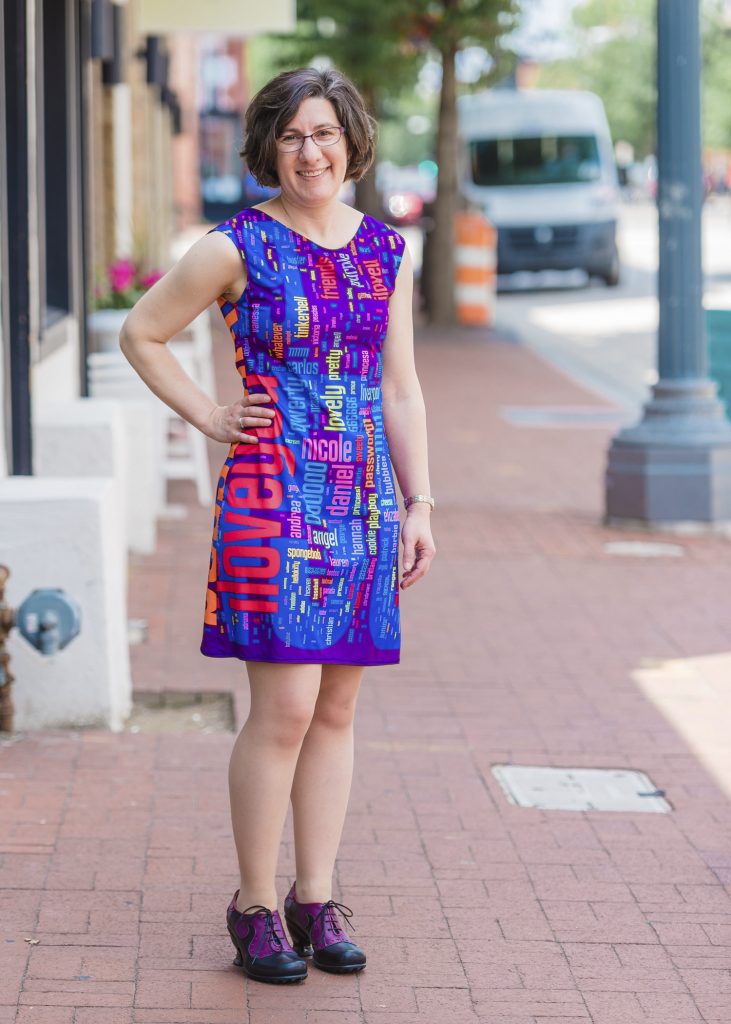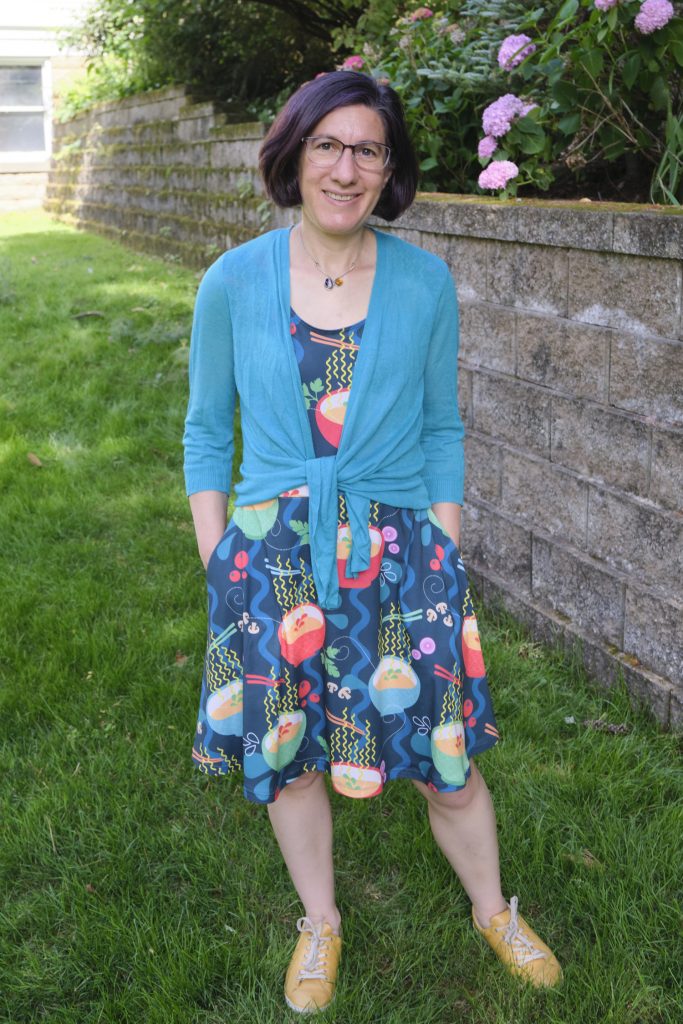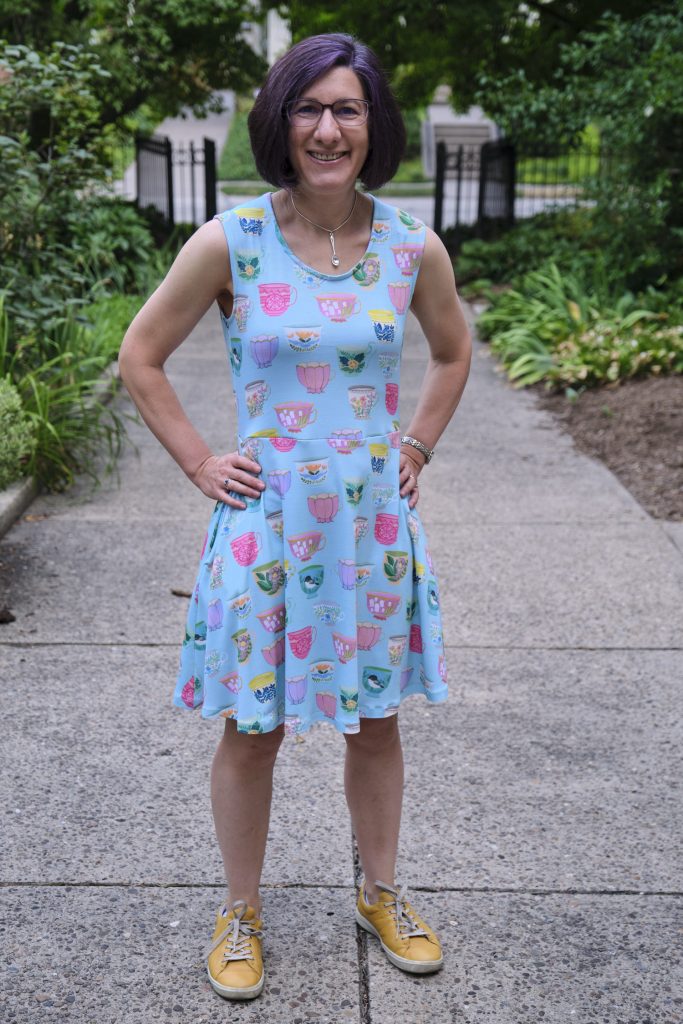Last September I bought my first Sinclair pattern and sewed an Alana dress. I have since sewn two more (and there will probably be more) and several other Sinclair patterns. I’ve found the Sinclair patterns to be well drafted and pretty straightforward to understand. They can be downloaded as PDFs and printed on a home printer, printed in large format at a copy shop, or projected.
I chose Alana as my first pattern mostly because I liked the pockets. I continue to love the pocket style, where the pockets are anchored by two princess seams. I also liked the neckline that used a facing instead of a binding or band.
I obsessed over what fabric to use, and continuing with my privacy research related theme, I selected fabric with eyes on it — evil eye blue by Laura May. I got the same fabric in the small size for the sleeves. I had both printed on Spooflower modern jersey.
Then I printed out the PDF layer for the size 4 petite pattern on the laser printer at work and spent about an hour taping it together and cutting out all the paper pattern pieces. Then I laid all my cutting mats out on the hallway floor and laid out the fabric as shown in the pattern instructions. I quickly realized that I didn’t have enough fabric for that sort of layout. Puzzled, I looked on the Sinclair website for where to ask questions, and discovered the Sinclair Patterns Group on Facebook. This FB group is a great resource for sewing Sinclair patterns. I found you can easily search for the name of a pattern and find lots of photos of garments other people have made with that pattern, including tips on fabric selection and alterations. You can also post questions or show off your own makes. In any case I soon learned that the layout in the instructions is just a suggestion and may not work depending on the fabric width, garment size, etc. I figured out how to fold the fabric to cut it and get it all in. I also learned from the FB group about a YouTube video tutorial for making the Alana dress.
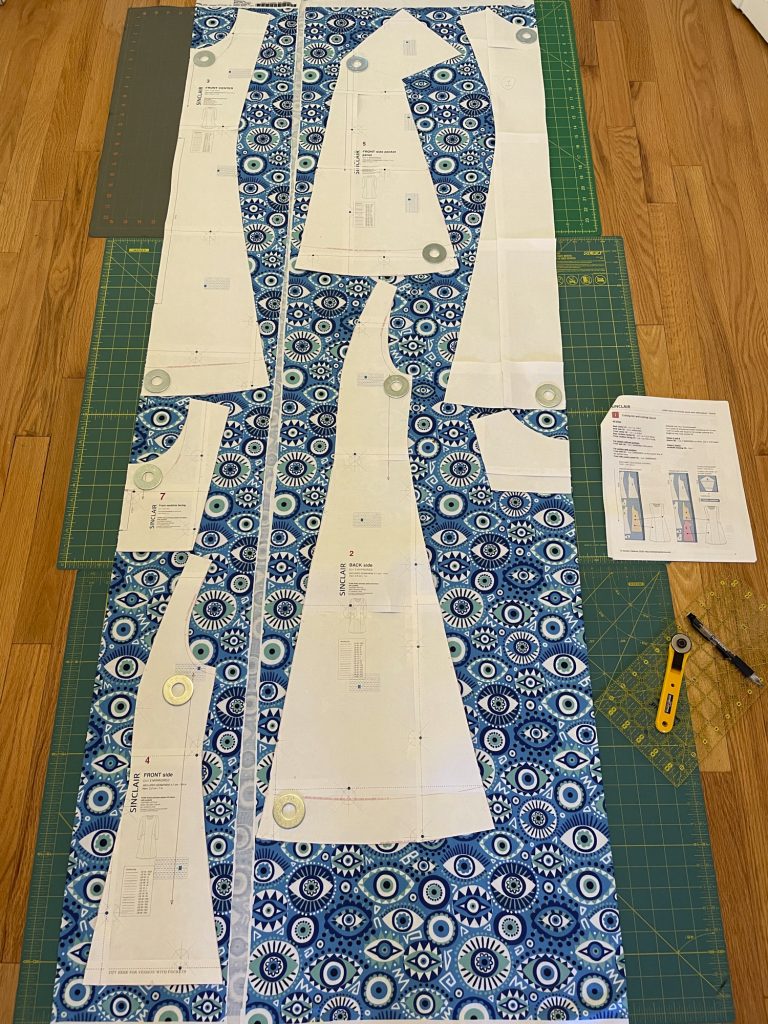
I used large washers as fabric weights and used my rotary cutter to cut out the fabric. Then I followed the instructions to sew the dress. I selected the regular neckline, long sleeves, and knee-length options. On the advice of the video tutorial I extended the length of the front facing so that it would fall below the bust line. I used a very narrow zigzag stitch for all of the seams and a medium zigzag to finish the seam edges. I finished the sleeve and bottom hems with HeatNBond Soft Stretch and zigzagged over the edges.
When I tried on the dress it looked OK, but the waist is not designed to be fitted, and it looked a little baggy on me. Indeed, the pattern explains that there is about three inches of ease at the waist. So I decided to take the dress in at the sides and the back princess seams to remove most of that ease. The dress looked much better on me without the ease.
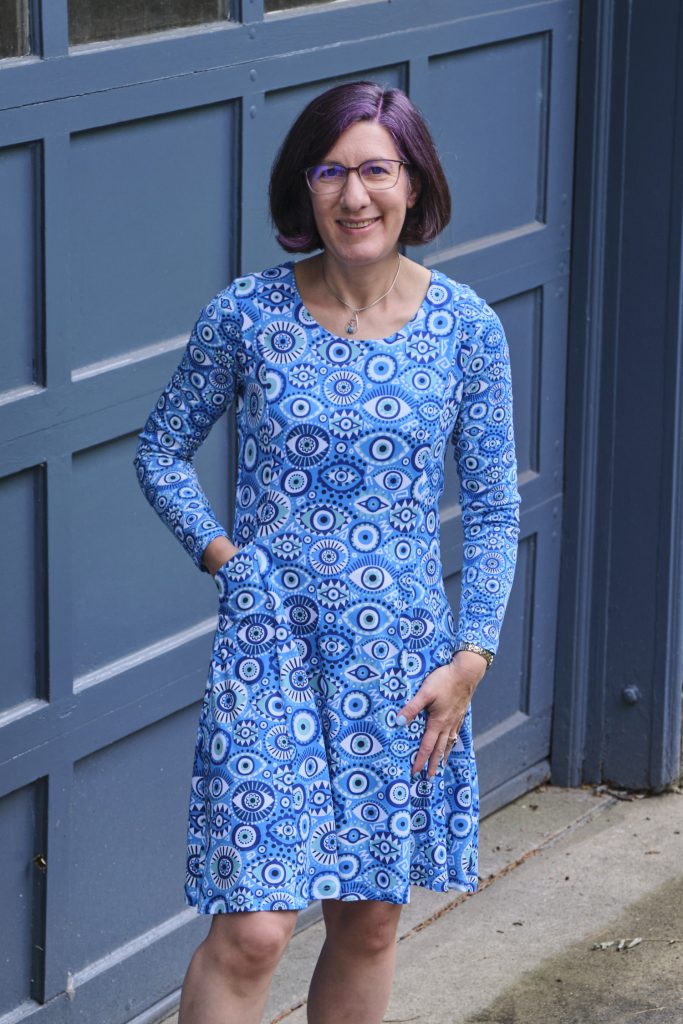
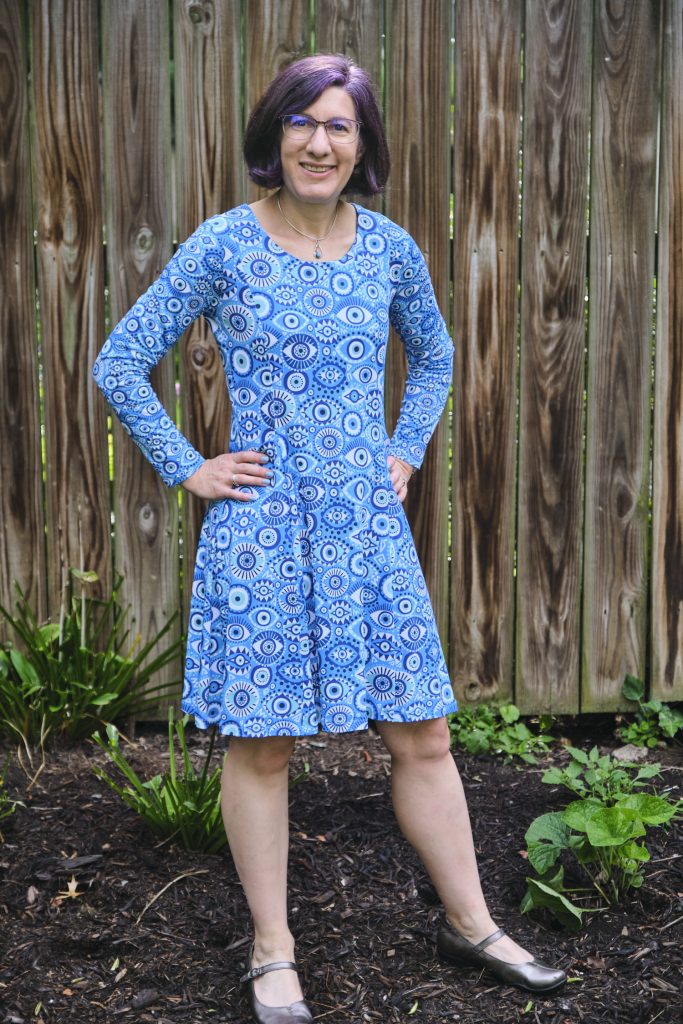
I made my second Alana dress in December using a rich purple scuba suede fabric. The fabric is soft, stretchy, washable, and pretty easy to sew. I used a lighter ITY fabric for the front and back facings and extended both of them below the bust. I thought about using a lighter fabric for the inside of the pockets but decided to try the pockets entirely in scuba suede, and they worked out fine. A line of top stitching across the top of the pockets might have been helpful, but it is ok without. I did not bother stitching over the seam edges. Once again I ended up removing the ease. Months later the fabric is holding up pretty well after many wearings and washings, although it is showing some slight signs of pilling.
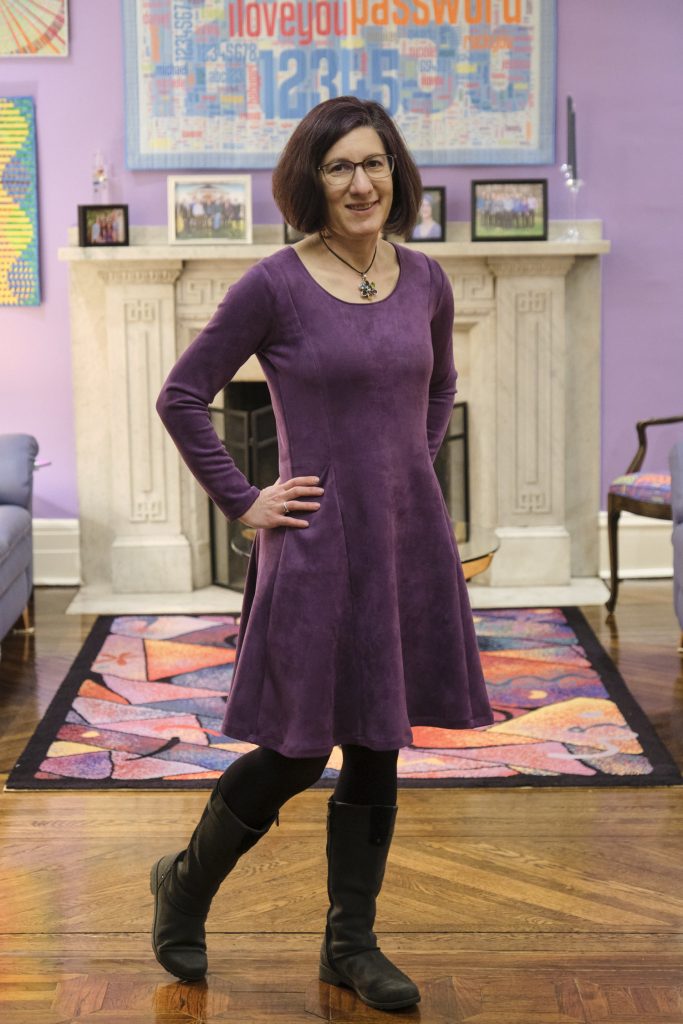
My third Alana dress was another dress in Spoonflower modern jersey. This time I removed the ease in the pattern when I cut it. Cutting out this one took a while because I obsessed over the fabric placement. This was the third version of my bad passwords dress (there’s a whole story behind it), and this time I wanted to have long sleeves and pockets.
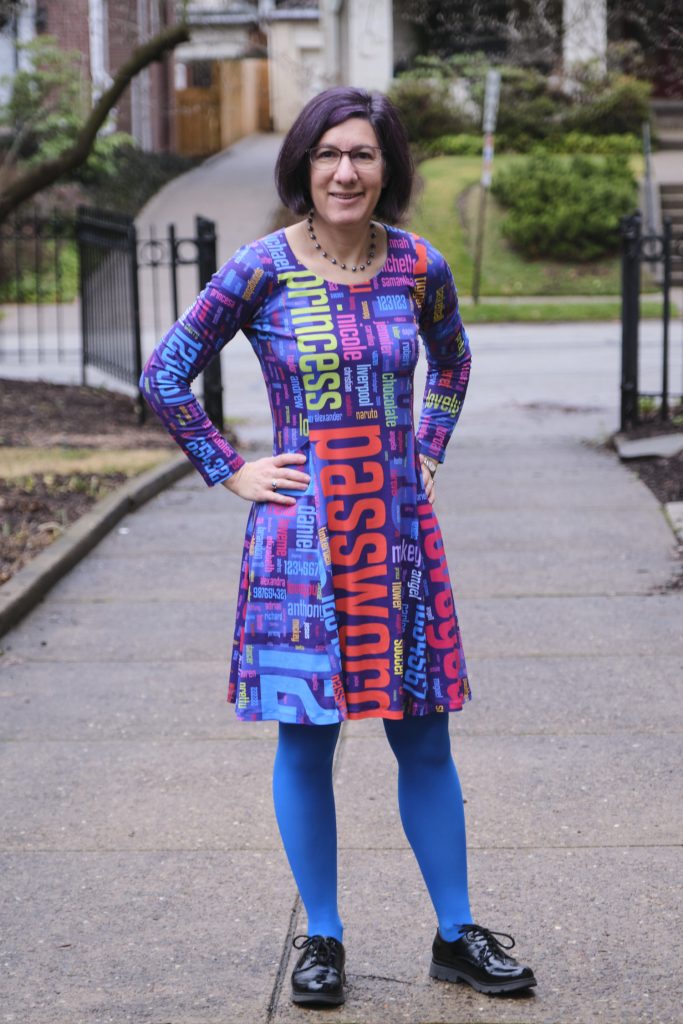
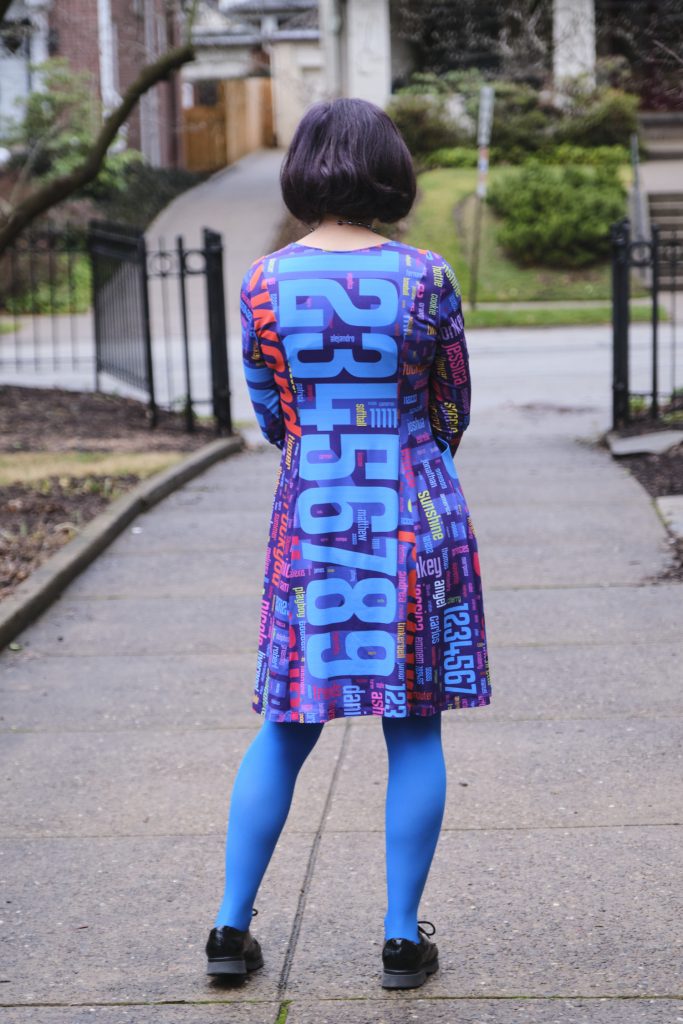
And see the original passwords dress below
